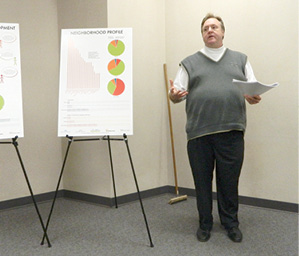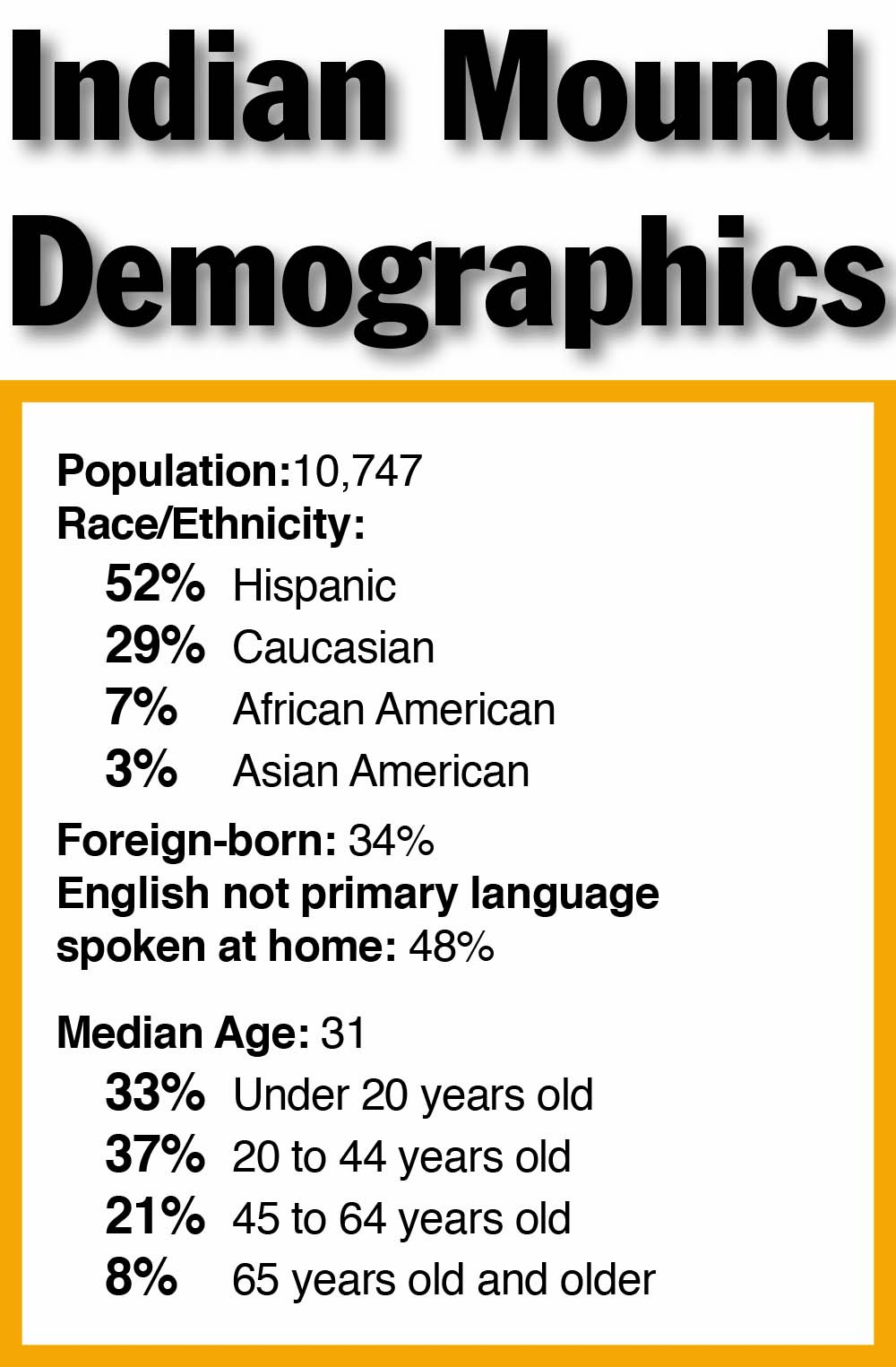
By LESLIE COLLINS
Northeast News
November 6, 2013
For months, Indian Mound has been working with Mattie Rhodes Center and the University of Missouri-Kansas City (UMKC) Institute for Human Development to complete a quality of life plan for the neighborhood, and now the results are in.
“We found one of the great strengths you have in this neighborhood is the diversity, and people come here because of that,” said Michael B. Abel, research associate at the UMKC Institute for Human Development and one of the co-authors of the study. “They want to live in a culturally diverse community. We think that should be something that should be celebrated and appreciated.”
In addition, within Indian Mound are two of the best elementary schools in the Kansas City Public Schools (KCPS), he said.
Another finding regarded the rate of crime in the neighborhood. Thirty-five percent of residents who responded to the quality of life survey said they feel unsafe in the neighborhood.
“When you hear sirens, no one even pays attention… we’re becoming desensitized to it because it’s so frequent,” one resident said.
However, “Actual instances of reported crime in the Indian Mound neighborhood do not necessarily substantiate perceptions of the residents who feel the neighborhood is unsafe,” according to the Indian Mound Quality of Life Study. Using 2012 crime statistics, the researchers found that offenses against individuals and their property were relatively low compared to the rest of the city. Within the East Patrol Zone coverage area, only nine percent of homicides, two percent of forcible sex offenses and two percent of assaults occurred in Indian Mound.
“When you really think about it, the amount of crime in your neighborhood may not be as serious as you think,” Abel said.
However, when it comes to burglary, robbery and vehicle theft, Indian Mound ranks worse than the entire city, he said.
“It’s kind of a mixed bag. I thought that was very interesting,” he said.
The purpose of the study was to identify the issues, needs and assets of Indian Mound, and the study was funded through a grant from the Mid-America Regional Council’s (MARC) Creating Sustainable Places initiative. About 40 Indian Mound residents participated in interviews and in-depth focus groups for the study.
“All of that information provides a good snapshot in terms of what are the needs, but the study also brings to light what resources are currently available,” said John Fierro, president and chief executive officer of Mattie Rhodes Center.
Using that information, residents can determine the gaps in service and then begin to identify priorities, Fierro said.
Residents identified their top seven initiatives to re-establish Indian Mound as a “thriving urban neighborhood” and are creating action teams to accomplish those initiatives. Each action team will be comprised of neighborhood residents and supporting agencies.
Mattie Rhodes has already agreed to serve as a supporting agency for the “Build a Bridge Through Language” action team which will help residents learn Spanish, free of charge, to better communicate with their neighbors. Fierro added that Mattie Rhodes could serve in other ways, depending on what the residents and business leaders need and want.
Other action teams include:
•Better Schools Team (priority project): will support parent involvement, school improvement plans and assist the district with reaccreditation efforts
•Clean Up Indian Mound Team: will control litter by establishing block leaders and educating residents
•Safe Neighborhood Team: will work to increase crime reporting, address language barriers and focus on crime prevention efforts
•Light the Way Team: will address overgrown trees blocking street lights and other safety concerns
•Fun for a Reason Team: will focus on uniting the community through social activities and will highlight and celebrate the neighborhood’s cultural diversity
•Property Matters Team: will work with the city to assign a property codes inspector specifically to the Indian Mound neighborhood, will request a systematic inspection program of all properties and will launch a public education campaign
Each team will work together to create strategies for implementing their action steps, said Indian Mound Neighborhood Association President Katie Greer. Greer added that it’s not too late to sign up for an action team and that interested individuals can email her at president.imna@gmail.com.
“If there’s something that is your thing, this is the opportunity to get involved in it and make a difference,” Greer said. “There are issues that we’re dealing with as a neighborhood, but people seem to be excited about doing something about them. We are shifting away from just complaining about problems, and we’re actually looking for solutions, and that’s what I love. I’m really looking forward to seeing what action steps come out of the initial planning meetings, and then once those steps are taken, seeing results.”
















